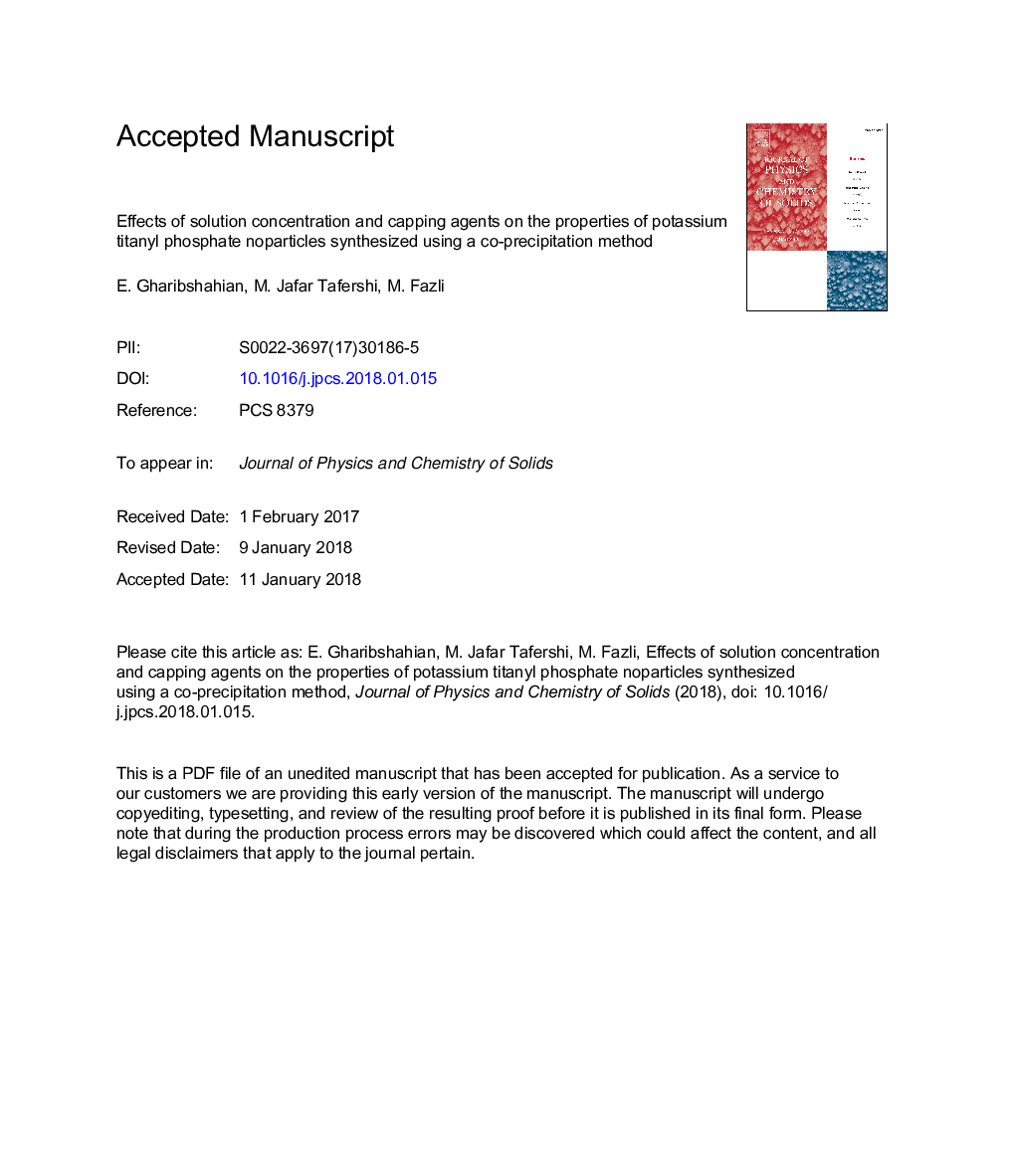| Article ID | Journal | Published Year | Pages | File Type |
|---|---|---|---|---|
| 7920521 | Journal of Physics and Chemistry of Solids | 2018 | 22 Pages |
Abstract
In this study, KTiOPO4 (KTP) nanoparticles were synthesized using a co-precipitation method. The effects of the solution concentration (M) and capping agents, such as PVA, oxalic acid, glycine, triethanolamine, and l-alanine, on the structural, microstructural, and optical properties of the products were investigated using X-ray diffraction (XRD), Fourier transform infrared (FTIR) spectroscopy, ultraviolet-visible spectroscopy, field emission scanning electron microscopy, and transmission electron microscopy. Decreasing the solution concentration decreased the crystallite size from 53.07â¯nm (for Mâ¯=â¯2) to 39.42â¯nm (for Mâ¯=â¯0.5). After applying different capping agents to the sample at the optimum concentration (Mâ¯=â¯0.5), the crystallite size decreased again and grains as small as 10.61â¯nm were obtained. XRD and FTIR analyses indicated the formation of KTP nanoparticles with an orthorhombic structure in all of the samples. The optical band gap increased as the crystallite size decreased. Different morphological patterns such as spherical, needle shaped, polyhedron, and tablet forms were observed in the nanoparticles, which were correlated with the effects of the capping agents employed.
Keywords
Related Topics
Physical Sciences and Engineering
Materials Science
Electronic, Optical and Magnetic Materials
Authors
E. Gharibshahian, M. Jafar Tafershi, M. Fazli,
